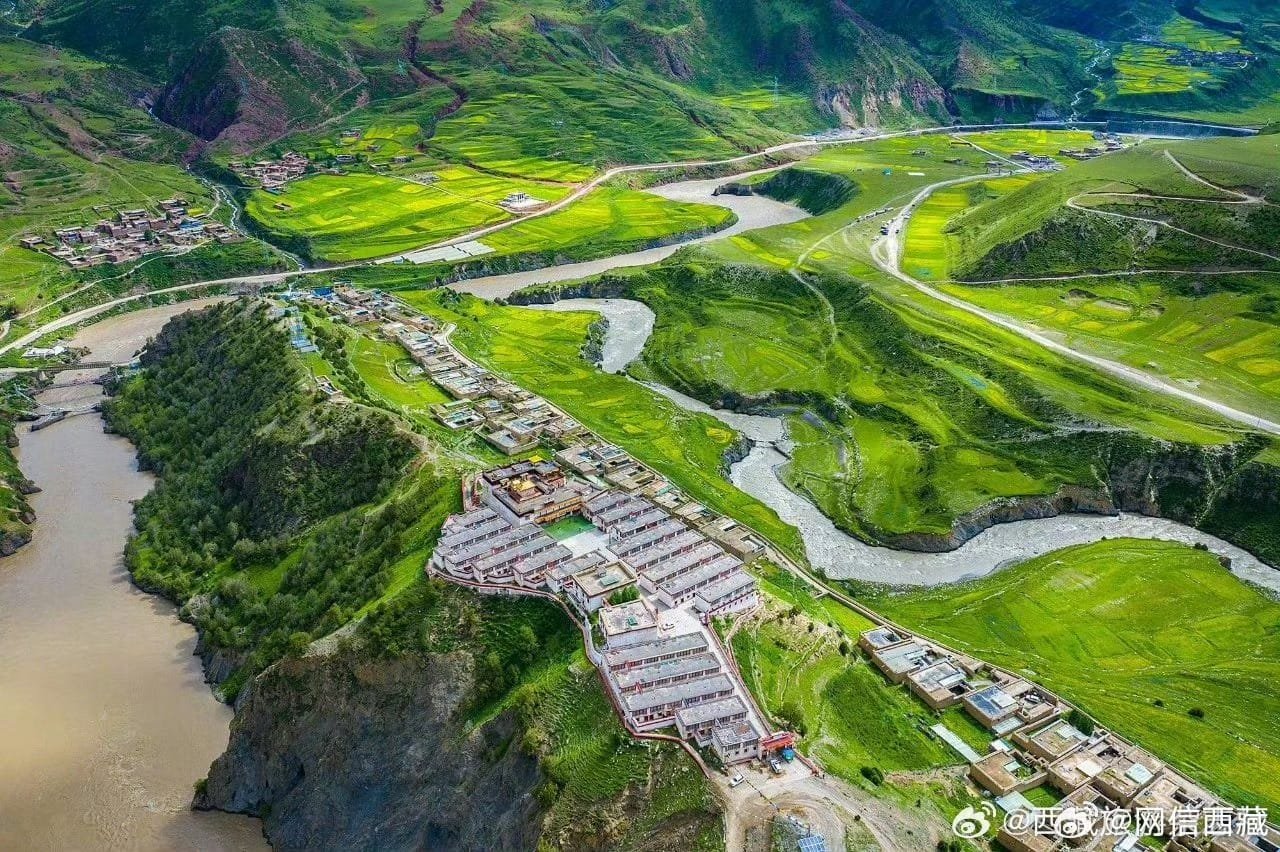The Drichu River, also known as the Jinsha River, is one of the most significant watercourses in Tibet and China. Serving as the upper reaches of the Yangtze River, it is deeply intertwined with the geography, culture, and history of the Tibetan Plateau. In Tibetan, the Drichu (འབྲི་ཆུ་, ‘Bri Chu’) means “Water of the Female Yak,” a name that reflects its cultural importance. This mighty river originates from the Tanggula Mountains in Qinghai and flows through Tibet, Sichuan, and Yunnan before joining the main Yangtze River system.
Geographical Journey of the Drichu (Jinsha) River
Origin and Course
The Drichu River begins in the Geladandong Glacier of the Tanggula Mountains, located on the Qinghai-Tibet Plateau. As it flows southward, it forms a natural border between Tibet and Sichuan, passing through Yushu in Qinghai and entering Yunnan via Markham County (Mangkam). The river’s journey continues until it merges with the main Yangtze River at Yibin in Sichuan.
Key Features of the Drichu (Jinsha) River
- Total Length of the Yangtze River: 6,300 km
- Drichu River Section in Tibet: 509 km
- Total Basin Area: 1.8 million km²
- Basin Area within Tibet: 23,060 km²
This extensive network of water sustains the Tibetan highlands, shaping the region’s environment and economy.

Ecological and Economic Significance
Aquatic Life
The Drichu River supports a diverse range of aquatic species, including the Schizothorax fish (Tibetan snow trout), which thrives in its high-altitude waters. The river’s ecosystem plays a crucial role in maintaining biodiversity across the Tibetan Plateau.
Natural Resources
- Forests: The surrounding region is covered with dense woodlands that provide an essential habitat for wildlife.
- Fertile Farmlands: The river valley supports the cultivation of barley, wheat, and rapeseed, serving as a lifeline for Tibetan farmers and nomads.
Historical and Cultural Importance
The Drichu (Jinsha) River has historically been a crucial artery for Tibetan nomads, traders, and farmers. Throughout history, it has influenced local trade, transport, and settlement patterns. Ancient texts, including the Book of Han and Shuowen Jiezi, refer to it under various names, such as Shengshui, Lishui, and Ruoshui. It was once considered a tributary of the Yangtze River until Ming Dynasty explorer Xu Xiake identified it as the true source of the Yangtze after extensive field research.
A Journey Through the Tibetan Plateau
For travelers venturing into eastern Tibet, the Drichu River offers breathtaking landscapes, deep gorges, and lush valleys. It provides a glimpse into the heart of Tibetan river culture while supporting hydroelectric projects and trade routes essential to the region’s economy.
Conclusion
The Drichu (Jinsha) River is not just a major tributary of the Yangtze—it is a lifeline of Tibet, playing a crucial role in ecological balance, agriculture, and cultural heritage. Whether viewed from its towering mountain origins or its winding valleys, the river remains one of the most awe-inspiring natural wonders of the Tibetan Plateau.









